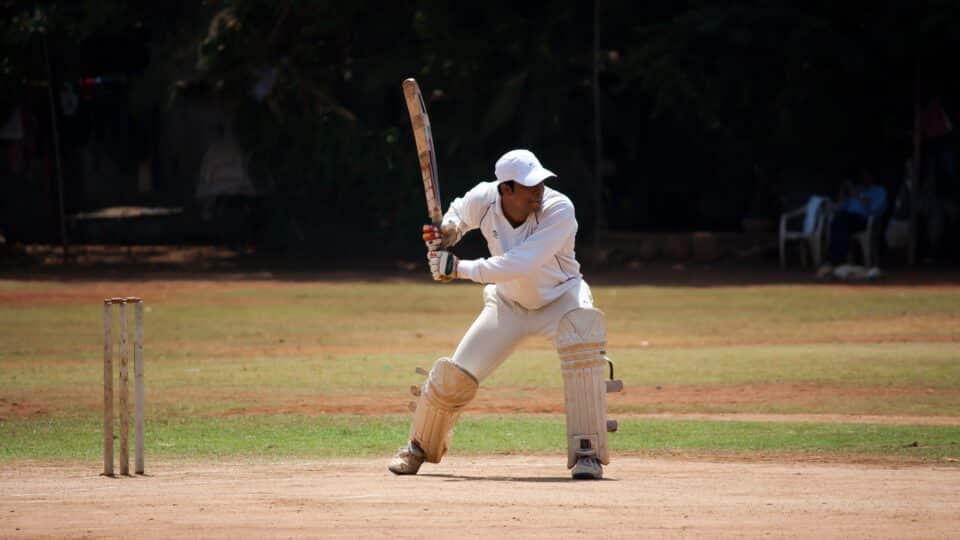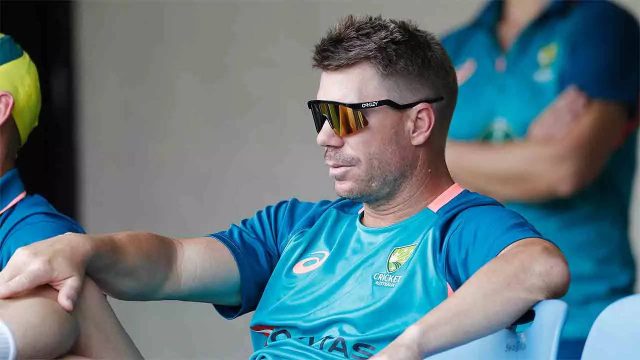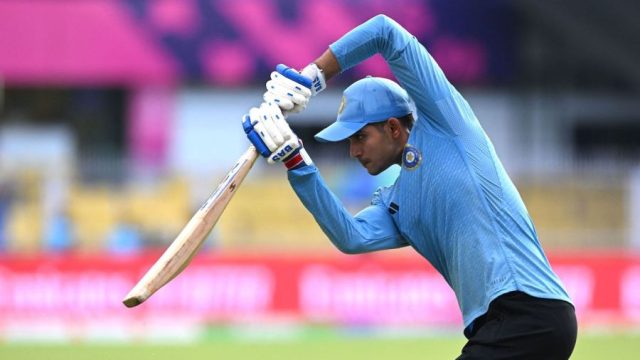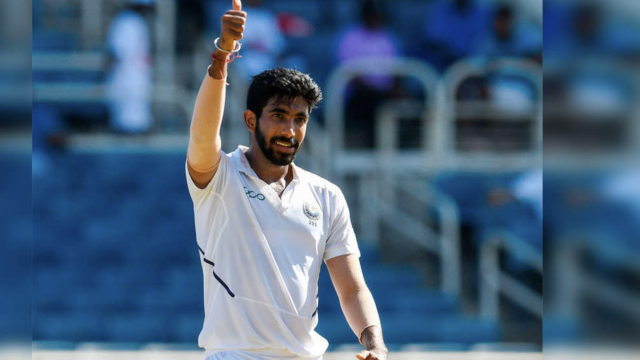What is strike rate in cricket?

Strike rate in cricket is a key statistic that measures the number of runs a batsman scores per 100 balls faced. It is an important measure of a batsman’s attacking capability and is often used to compare the scoring ability of batsmen in different matches and across different formats of the game.
In shorter forms of cricket, such as One Day Internationals and Twenty20, a high strike rate is crucial for a team to score runs quickly and put pressure on the opposition. A player with a high strike rate is able to score runs at a faster rate, which can help their team set or chase down challenging targets.
Strike rate is also an important factor in the selection of players for national teams, as it is an indication of their ability to score runs quickly and aggressively.
Strike rate definition
To calculate a player’s strike rate, the number of runs they have scored is divided by the number of balls they have faced, and the result is multiplied by 100. For example, if a batsman has scored 50 runs off 30 balls faced, their strike rate would be calculated as follows: (50 runs / 30 balls) x 100 = 166.67.
In cricket, the term “strike rate” is often used to refer specifically to a batsman’s scoring rate, but it can also be used to refer to a bowler’s wicket-taking rate. In this context, a high strike rate would indicate that a bowler is taking wickets at a frequent rate.
The importance of strike rate varies depending on the format of the game. In limited overs cricket, where each team has a fixed number of overs to score as many runs as possible, a high strike rate is essential for a team to score runs quickly and put pressure on the opposition. A player with a high strike rate is able to score runs at a faster rate, which can help their team set or chase down challenging targets.
For individual batsmen, strike rate is an important measure of their attacking capability. A high strike rate can make a batsman a valuable asset to their team, particularly in limited overs cricket where the ability to score quickly is at a premium. On the other hand, a low strike rate can be a cause for concern, as it indicates that the batsman may be struggling to score runs at a sufficient rate.
Importance of strike rate
In limited overs cricket, strike rate is an important factor in the success of both teams and individual players. In One Day Internationals (ODIs) and Twenty20 (T20) matches, where each team has a fixed number of overs in which to score runs, a high strike rate can help a team score runs quickly and put pressure on the opposition. This can be especially important in T20, where the pressure to score quickly is even greater due to the shorter duration of the game.
A player with a high strike rate is able to score runs at a faster rate, which can help their team set or chase down challenging targets. For example, if a team is chasing a target of 250 runs in an ODI, having a few batsmen with high strike rates in the top order can allow the team to score runs quickly and build a strong platform for the middle and lower order to build on. Similarly, in T20, a high strike rate can help a team score runs quickly and put pressure on the opposition, particularly in the latter stages of the innings when the required run rate may be increasing.
In addition to the team’s success, a high strike rate is also important for individual players. A player with a high strike rate is more likely to be selected for national teams and can command a higher price in player auctions for T20 leagues. A high strike rate is also an indication of a player’s ability to score runs quickly and aggressively, which can make them a valuable asset in any team.
On the other hand, a player with a low strike rate may face challenges in their career. They may find it harder to get selected for national teams and may not command as high a price in player auctions. A low strike rate can also be a cause for concern for a player’s team, as it may indicate that they are struggling to score runs at a sufficient rate. However, it is important to note that strike rate is just one factor that is taken into consideration when evaluating a player’s performance, and there are many other factors that can contribute to a player’s success.
Examples of high and low strike rates
Examples of players with high strike rates in cricket include Virender Sehwag, AB de Villiers, and Chris Gayle.
Virender Sehwag, who represented India in international cricket, was known for his aggressive batting style and high strike rate. In ODIs, he had a strike rate of 101.33, which is considered to be very good for an opening batsman. Sehwag was especially effective in T20 cricket, where his attacking style and high strike rate helped him score runs quickly and put pressure on the opposition. In T20 internationals, he had a strike rate of 138.10, which is one of the highest strike rates among batsmen who have scored more than 1,000 runs in the format.
AB de Villiers, who represented South Africa in international cricket, is another player known for his high strike rate. In ODIs, he had a strike rate of 101.09, which is considered to be very good for a batsman in the middle order. De Villiers was especially effective in T20 cricket, where his attacking style and high strike rate made him one of the most sought-after players in player auctions for T20 leagues around the world. In T20 internationals, he had a strike rate of 149.46, which is one of the highest strike rates among batsmen who have scored more than 1,000 runs in the format.
Chris Gayle, who represented the West Indies in international cricket, is another player known for his high strike rate. In ODIs, he had a strike rate of 87.18, which is considered to be very good for an opening batsman. Gayle was especially effective in T20 cricket, where his powerful hitting and high strike rate helped him score runs quickly and put pressure on the opposition. In T20 internationals, he had a strike rate of 146.22, which is one of the highest strike rates among batsmen who have scored more than 1,000 runs in the format.
There are many circumstances in which a high strike rate is especially beneficial for a player or team. For example, in T20 cricket, where the pressure to score quickly is greater due to the shorter duration of the game, a high strike rate can help a team score runs quickly and put pressure on the opposition. In run chases, having a few batsmen with high strike rates in the top order can allow the team to score runs quickly and build a strong platform for the middle and lower order to build on.
Examples of players with low strike rates in cricket include Jacques Kallis, Rahul Dravid, and Alastair Cook.
Jacques Kallis, who represented South Africa in international cricket, is a player known for his solid and consistent batting rather than his attacking style. In ODIs, he had a strike rate of 73.89, which is considered to be relatively low for a batsman in the modern game. Kallis was more effective in Test cricket, where his solid and consistent batting helped him score runs at a slower but more steady rate.
Rahul Dravid, who represented India in international cricket, is another player known for his solid and consistent batting rather than his attacking style. In ODIs, he had a strike rate of 71.24, which is considered to be relatively low for a batsman in the modern game. Dravid was especially effective in Test cricket, where his solid and consistent batting helped him score runs at a slower but more steady rate.
Alastair Cook, who represented England in international cricket, is another player known for his solid and consistent batting rather than his attacking style. In ODIs, he had a strike rate of 72.86, which is considered to be relatively low for a batsman in the modern game. Cook was more effective in Test cricket, where his solid and consistent batting helped him score runs at a slower but more steady rate.
Players with low strike rates may face challenges in their careers, particularly in limited overs cricket where the ability to score runs quickly is at a premium. They may find it harder to get selected for national teams and may not command as high a price in player auctions for T20 leagues. A low strike rate can also be a cause for concern for a player’s team, as it may indicate that they are struggling to score runs at a sufficient rate. However, it is important to note that strike rate is just one factor that is taken into consideration when evaluating a player’s performance, and there are many other factors that can contribute to a player’s success. For example, a player with a low strike rate may still be a valuable asset to their team due to their solid and consistent batting, which can help build partnerships and see their team through challenging situations.
How to improve strike rate in cricket – video
In this video Chris Lynn shares three tips to improve your strike rate in cricket.
What is strike rate in cricket? – The Conclusion
In conclusion, strike rate in cricket is a key statistic that measures the number of runs a batsman or bowler scores per 100 balls faced. It is an important measure of a player’s attacking capability and is often used to compare the scoring ability of batsmen or the wicket-taking ability of bowlers in different matches and across different formats of the game.
A high strike rate is crucial for a team’s success in limited overs cricket, as it allows them to score runs quickly and put pressure on the opposition. It is also an important factor in the selection of players for national teams and in player auctions for T20 leagues.
While a high strike rate is desirable, it is important to note that it is just one factor that is taken into consideration when evaluating a player’s performance, and there are many other factors that can contribute to a player’s success.
Regardless of their strike rate, every player has the potential to make a valuable contribution to their team and to the sport of cricket.





